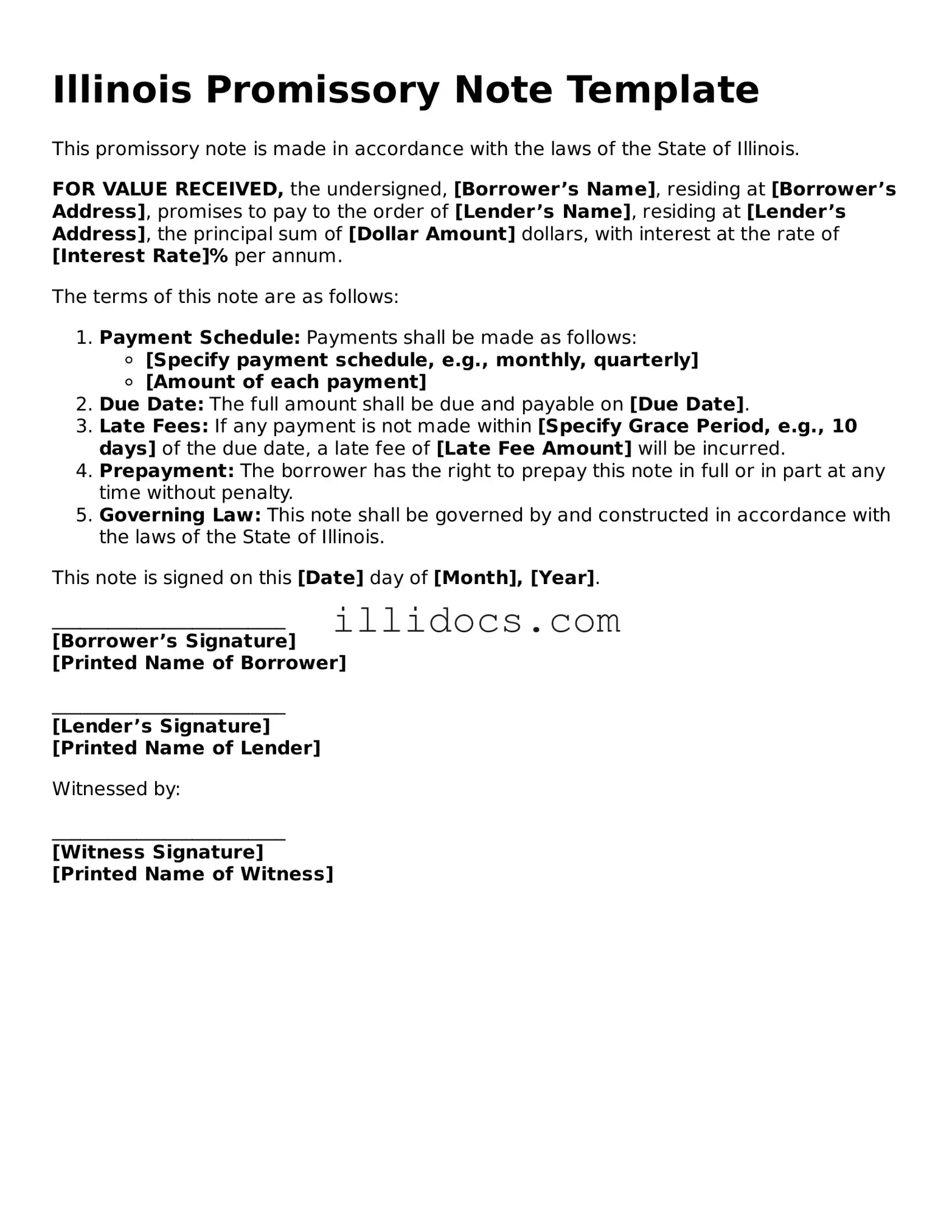What is a promissory note in Illinois?
A promissory note is a written promise to pay a specific amount of money to a designated person or entity at a particular time or on demand. In Illinois, this document serves as a legal instrument that outlines the terms of the loan, including the principal amount, interest rate, payment schedule, and any consequences for defaulting on the payment. It is a crucial tool for both lenders and borrowers, ensuring clarity and legal protection for both parties involved.
Who can use a promissory note in Illinois?
Any individual or business can use a promissory note in Illinois. Whether you are a private lender offering a loan to a friend or a business providing financing to customers, a promissory note can formalize the agreement. However, it is essential to ensure that both parties understand the terms and conditions outlined in the document to avoid future disputes.
What are the essential elements of an Illinois promissory note?
An effective promissory note in Illinois typically includes several key components: the names and addresses of the borrower and lender, the principal amount being borrowed, the interest rate (if applicable), the repayment schedule, and any penalties for late payments or default. Additionally, signatures from both parties are required to validate the agreement, and it is often advisable to have the document notarized for added legal protection.
Is a promissory note legally binding in Illinois?
Yes, a promissory note is legally binding in Illinois as long as it meets the necessary requirements. Both parties must agree to the terms, and the document must be signed by the borrower. If either party fails to adhere to the terms of the note, the other party has the right to take legal action to enforce the agreement or recover the owed amount.
Can I modify the terms of a promissory note after it has been signed?
Yes, the terms of a promissory note can be modified after it has been signed, but this must be done in writing and agreed upon by both parties. It is crucial to document any changes clearly to avoid confusion or disputes in the future. Both parties should sign the amended document to ensure that it is legally enforceable.
What happens if the borrower defaults on the promissory note?
If the borrower defaults, meaning they fail to make payments as agreed, the lender has several options. They may initiate collection efforts, which can include contacting the borrower for payment or negotiating a new payment plan. If these efforts fail, the lender may choose to pursue legal action to recover the owed amount. Having a well-drafted promissory note can significantly aid in this process.
Do I need a lawyer to create a promissory note in Illinois?
While it is not legally required to have a lawyer draft a promissory note, consulting with a legal professional can provide valuable insights. A lawyer can ensure that the document complies with Illinois law and adequately protects your interests. This is especially important for larger loans or complex agreements.
Are there any specific laws governing promissory notes in Illinois?
Yes, promissory notes in Illinois are governed by both state laws and the Uniform Commercial Code (UCC). The UCC provides a framework for commercial transactions, including the creation and enforcement of promissory notes. It is essential to be aware of these regulations to ensure compliance and protect your rights.
Can a promissory note be used for business loans?
Absolutely. A promissory note is commonly used for business loans. It provides a clear record of the loan agreement between the lender and the business, outlining the repayment terms and any interest charges. This documentation is vital for both parties, as it establishes expectations and legal obligations.
What should I do if I lose my promissory note?
If you lose your promissory note, it is important to act quickly. Notify the other party involved in the agreement and consider drafting a replacement note. It may also be wise to include a clause in the new document stating that the previous note is void. Keeping a copy of the new note and any correspondence related to the lost document is essential for future reference.
